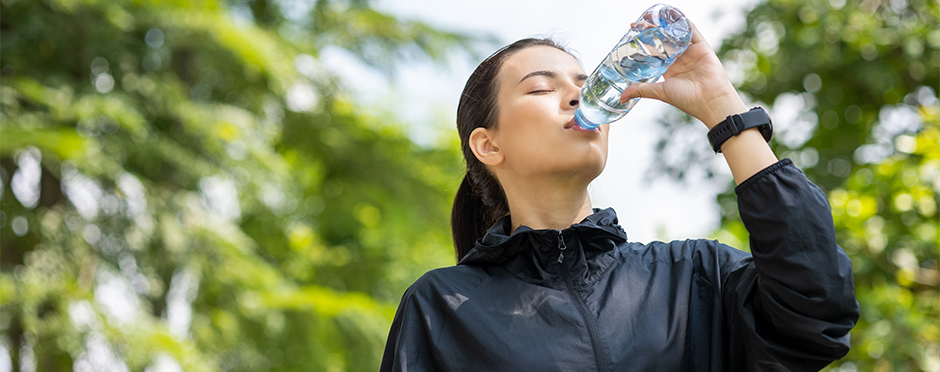
Post-Marathon Recovery: Essential Physical Therapy Tips For Runners
Leave a CommentCompleting a marathon is an incredible achievement, but the journey doesn’t end at the finish line. The hours and days following a marathon are crucial for recovery and preventing injuries. Physical therapy plays a significant role in helping runners bounce back effectively. In this blog post, we will discuss essential post-marathon recovery strategies that every runner should consider. These tips, recommended by physical therapists, will help you minimize soreness, reduce the risk of injuries, and get back to running with confidence.
The First Hours After A Marathon
- Rehydrate and Refuel: Your body has just endured a significant physical challenge. Start by rehydrating with water and electrolyte-rich fluids. Consume a balanced meal containing carbohydrates, protein, and healthy fats to aid in muscle recovery.
- Gentle Stretching: Perform gentle, static stretching exercises to relieve muscle tension and tightness. Focus on major muscle groups like quadriceps, hamstrings, calves, and hip flexors. Avoid aggressive stretching that may strain fatigued muscles.
- Compression Garments: Consider wearing compression socks or sleeves to promote blood circulation and reduce swelling in your legs. These garments can be particularly helpful for long-distance runners.
- Rest and Sleep: Prioritize rest and sleep in the hours immediately following the race. Your body needs time to repair and regenerate damaged tissues.
The Days After The Marathon
- Active Recovery: Engage in light, low-impact activities like walking or swimming to promote blood flow without putting excessive strain on your muscles and joints.
- Physical Therapy Free Assessment: Schedule a post-marathon assessment with a physical therapist. They can identify any potential issues, assess muscle imbalances, and provide guidance on the best next steps for recovery. *
- Massage Therapy: Consider getting a sports massage to reduce muscle soreness and improve flexibility.
- Foam Rolling: Use a foam roller to release tight muscles. Focus on areas that tend to get tense during a marathon, such as the IT band, quads, and calves. Foam rolling can help alleviate knots and trigger points.
- Nutrition: Continue to prioritize a balanced diet rich in nutrients. Foods high in antioxidants, like fruits and vegetables, can aid in reducing inflammation.
- Hydration: Maintain proper hydration levels by drinking water throughout the day. Urine color can be a good indicator of your hydration status – aim for pale yellow.
- Ice Baths: Some runners find ice baths beneficial for reducing muscle soreness and inflammation. If you decide to try this, limit the duration to 10-15 minutes.
- Gradual Return to Running: Avoid the temptation to resume running too soon. Consult with your physical therapist or coach for a personalized return-to-running plan. Start with short, easy runs and gradually increase the intensity and duration.
Long-Term Recovery And Prevention
- Cross-Training: Incorporate cross-training activities like cycling, swimming, or strength training into your routine to maintain overall fitness and reduce the risk of overuse injuries.
- Strength and Flexibility: Regularly perform strength and flexibility exercises to address weaknesses and imbalances. A strong core and balanced muscle development can improve your running form and reduce the risk of injuries.
- Listen to Your Body: Pay close attention to any persistent pain, discomfort, or signs of overtraining. Ignoring these signals can lead to more significant problems down the road.
- Rest Days: Schedule rest days into your training plan to allow your body to recover fully. Rest is just as important as training.
- Professional Guidance: Consider periodic check-ins with a physical therapist, sports medicine physician, or running coach to monitor your progress and make adjustments to your training plan.
Post-marathon recovery is a critical phase for runners aiming to maintain their long-term performance and health. By following these physical therapy tips in the hours and days after a marathon, you can optimize your recovery, reduce the risk of injuries, and continue pursuing your running goals with confidence. Remember that every runner’s journey is unique, so it’s essential to tailor your recovery plan to your specific needs and consult with professionals when necessary. If you have additional questions or would like to connect with one of our movement experts to kickstart your recovery, schedule a free assessment today. Free assessments are available in person and virtually through our telehealth platform.
*Per federal guidelines, beneficiaries of plans such as Medicare, Medicaid, Tricare, VHA and other federally funded plans are not eligible for free assessments.
*Per federal guidelines, beneficiaries of plans such as Medicare, Medicaid, Tricare, VHA and other federally funded plans are not eligible for free assessments.
The Athletico blog is an educational resource written by Athletico employees. Athletico bloggers are licensed professionals who abide by the code of ethics outlined by their respective professional associations. The content published in blog posts represents the opinion of the individual author based on their expertise and experience. The content provided in this blog is for informational purposes only, does not constitute medical advice and should not be relied on for making personal health decisions.
